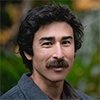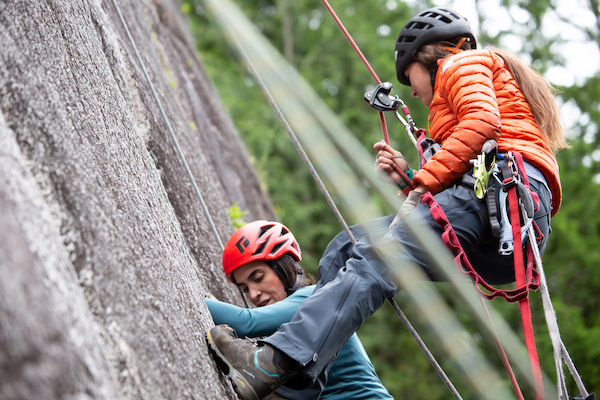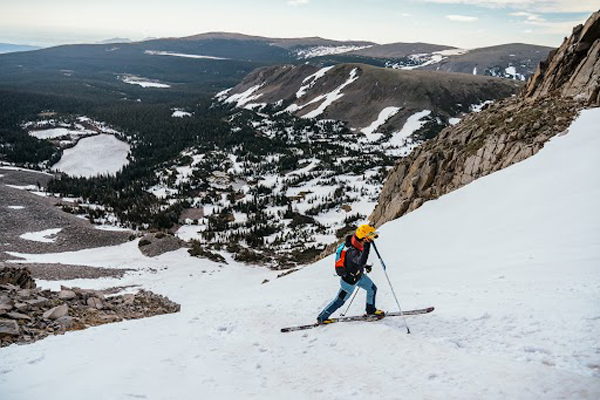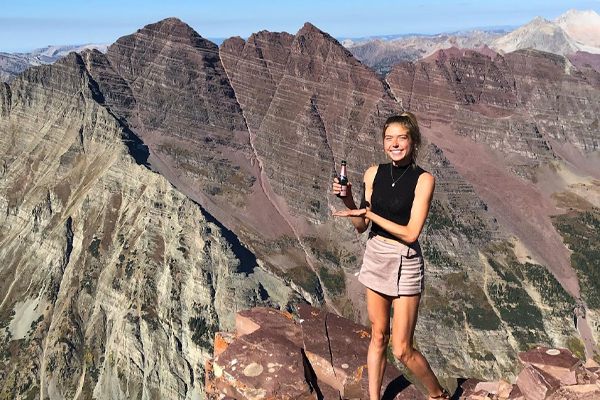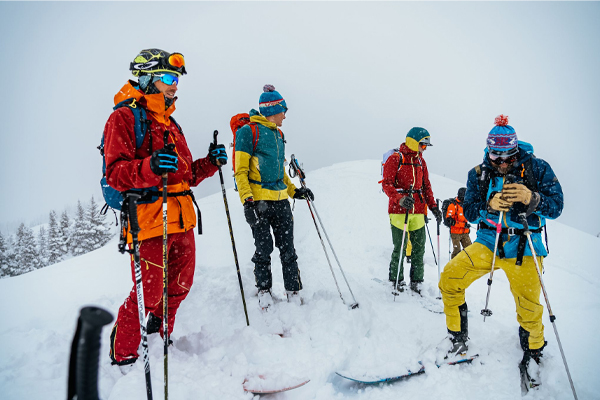Keenan Takahashi - Contrast in Comps

You would probably get disqualified if you cracked a beer at Nationals. Not so at the AAC Rock Rodeo....
- - -
After competing at the 2018 USA Climbing Bouldering Open Nationals and the American Alpine Club's 25th Hueco Rock Rodeo, La Sportiva climbing athlete Keenan Takahashi contrasts the strict nature of competiting on plastic to running wild with other open competitors on Hueco's East Spur, at two of the fiercest boulding competitions in the States.
Nationals in Salt Lake City (UT) and the Hueco Rock Rodeo (TX) are both technically climbing comps, but feel worlds apart. Beyond attracting the same core group of climbers—motivated to the point of obsession— the similarities between the two events is minimal, and their differences highlight major variations between climbing in the gym and outdoors. The talent pool for each runs deep, attracting climbers across the spectrum of styles and ability, resulting in two completely different, high-energy experiences.
January was my first time competing at Nationals, and when I stepped out of isolation, I didn’t really feel like I’d left. In isolation and on the mats, you can’t watch your fellow competitors, let alone talk to, or cheer for them. The cacophony of spectator cheers, sighs, gasps, and clapping is deafening, but competitors are required to remain silent. It’s a strange contrast to the gym climbing scene where I started, whose buzzing social support system was one of my early draws to the climbing community. The inability to verbalize and share your experience in real time causes an internal monologue that can be hard to redirect once it has wavered towards negativity. Why didn’t you latch that hold on the jump? Why did you rush that easy move? Why were you worried about how people around you were doing? Breaking through doubt can be difficult when there is nobody to share it with.
Even though it’s a competition, competing at the Rodeo feels surprisingly similar to any other day out bouldering in the Tanks. Psyche is high, fist bumps abound, jokes are shared, everyone is swept up in the collective energy. The only people you hear cheering are your friends, who also happen to be your fellow competitors. The success of others is uplifting rather than cause for worry; microbeta is plentiful, and the quicker everyone finishes climbs, the more you get to try that day. There is a positive feedback cycle inherently linked with collaboration; each of the lines becomes more doable with more pads, more support, more beta. You see different styles, and help each other find subtle tricks or body-english that can’t be gleaned via proprioception. When you’re frustrated, or confused, or anxious, you can mitigate these feelings by talking them out. You don’t run up to judges to get your scorecard; there isn’t a huge screen tracking everyone’s progress. Competing at the Rodeo also grants you the luxury of time—compared to Nationals and most indoor competitions—allowing you to rest and work through sequences as a group, honing in on the most effective method.
You see different styles, and help each other find subtle tricks or body-english that can’t be gleaned via proprioception.
Nationals, on the other hand, is divided into three intense half-hour bursts spread across two days: Qualifiers the first day, then Semis and Finals the second. You have four or five minutes for each of the four climbs, with no prior knowledge of the moves, or wall angle. A quick rush of joy follows each top, with an emphasis on quick; immediatley you're back on the mats preparing for the next problem, and there isn’t much time to celebrate. As soon as you drop to the ground, your focus is already on breathing and calming your adrenalized state. Regardless of where your focus should be, it’s challenging to avoid making comparisons when there is a huge projector displaying real-time rankings.
At Qualifiers, I read the problems well and managed to finish them all, landing a spot in Semis. Reading routes correctly in such a short period is confidence-building, and I was looking forward to the challenge at Semis. Unfortunately, the next day I made some pretty big mistakes, hesitating, and letting my nerves get the best of me. More so than my result in Semis, (in which I didn’t make Finals), I was disappointed with my performance. Sitting down, de-pumping, and watching the other competitors climb on the routes made me want to get up and try them again. It would have been easier to accept not making Finals if I had climbed as well as I know I can, but there were at least two boulders that I knew I was capable of finishing. I had faltered mentally, and been unable to recover physically. Dealing with the frustration of not climbing well in this concentrated format was hard to cope with initially. It took me a while to remember to step back and go a bit easier on myself. I reminded myself that I’d used all of my allotted time, and tried hard, even when things felt out of reach.
I think my mental focus is a greater asset than my physical ability; being able to strategize beforehand usually results in me climbing better than just showing up and figuring out what to do in the span of a few minutes. The Rodeo is one incredibly high-volume day—9 a.m. to 5 p.m.—with up to six boulders counting towards your final score. The night before, there's a big party with a raging bonfire where competitors receive their scorecards, revealing which area you're going to be climbing at the next day and also allowing for a little planning.
I think my mental focus is a greater asset than my physical ability...
Last year (2017), I’d started the day off at “Tequila Sunrise” (V12), a problem I’d tried before but never completed. It was baking in the sun and I got shut down. It messed with my head so I moved on to “Barefoot on Sacred Ground” (V12), which I’d finished earlier that week, and fired it first try of the day. The positive mental boost of having a hard climb in the bag, and climbing it efficiently, carried me through the rest of the day until I found myself with six climbs ticked and still an hour left on the clock. I went back to “Tequila,” skin on fire, muscles barely firing, but managed to fight my way to the top at a point in the day where walking felt like a struggle. Finishing "Tequila" not only boosted my score, it helped me realize I could still do hard climbs at the end of the day if I conserved my energy beforehand.
This time around, my plan was to start with climbs I had previously done to build confidence. First up were “The Flame” (V11) and “Flamignon” (V13) and then over to “Phantom Limb” (V12), a line I’d seen in videos, and had been itching to try for a few years. Next on the docket was returning to “The Ugh” (V11), with the hope that I would be able to recall my beta from seven years ago, and then finish up on the Chupacabra's which I’d never tried. Finishing boulders you haven’t tried before during the Rodeo is especially enjoyable; the deep level of focus creates vivid memories of beta and body-awareness, at an effort level that can be difficult to tap into on an everyday basis. Fortunately, everything went according to plan and I managed to finish all of the aforementioned boulders, with a bit of time to spare.
Feeling wrecked but with an a muerte mindset, I thought back to last year’s successful end of the day effort, and decided to try “Scream” (V11). The air was still and although it felt warm in the corridor, I managed to do the high version quickly, then the original with the campus move. I got close to doing the low start, “Ice Cream” (V12) but it was 4:45p.m. so we had to wrap things up and turn in our scorecards. Despite my exhaustion, I was stoked—it was definitely one of my best days bouldering. Toshi Takeuchi, a visiting climber from Japan, had climbed well at the beginning of the day. After “Flamignon,” we went our separate ways, but I knew that he had a really good chance of winning. The lack of live updates is a double-edged sword; it can be liberating to run around trying hard without comparing yourself to other competitors, but I was nervous when I found out on the bus ride back that Toshi had finished “Ice Cream.” I had no idea what else he’d climbed on, so I was a bit nervous when I heard he’d finished “Ice Cream.” Luckily for me, when the final scores were tallied that night, I was elated to find that my decision to go to "Scream" (which at a higher point value, had bumped Chupacabra Left off my list) had put me just over the edge and I’d eked my way into first place! Again, the extra effort at the end of the day had been the deciding factor.
Despite the differences in format, at each of these competitions everyone is trying with maximal effort until the every last second. The drive and determination of all of these climbers inspires me; everyone there is obsessed with climbing and is following their passion. Whether we’re inside the gym or out in the desert, everyone has worked hard to travel there and is stoked to bring their best and try hard. One of the things I love most about climbing is that you are really only testing yourself; even though these are competitions the greatest feeling of satisfaction comes from doing as well as you can, not from a ranking. Seeing that level of dedication and motivation brings me back to when I started climbing, where everyone just wants to improve and wishes the best for each other. No matter the outcome, you get to climb on really awesome new things you’ve never tried or seen, and hang out with other people that share the same love. At the end of the day, that's what drives us—past the moments in isolation, beyond the yuccas and ocotillos—and shapes us into who we are. After both of these competitions, all the climbers celebrated together. I’m already looking forward to trying my best again next year. I even managed to sneak in some beers to watch Finals.
Final Scorecard
•The Flame (V11)
•Flamignon (V13)
•Phantom Limb (V12)
•The Ugh (V11)
•El Chupacabra Right (V11)
•Scream (V11)
Related:
•JONATHAN SIEGRIST - BOULDERING IN RMNP
•Jon Glassberg - How to Climb V15
Preview Photo: © Greg Mionske

